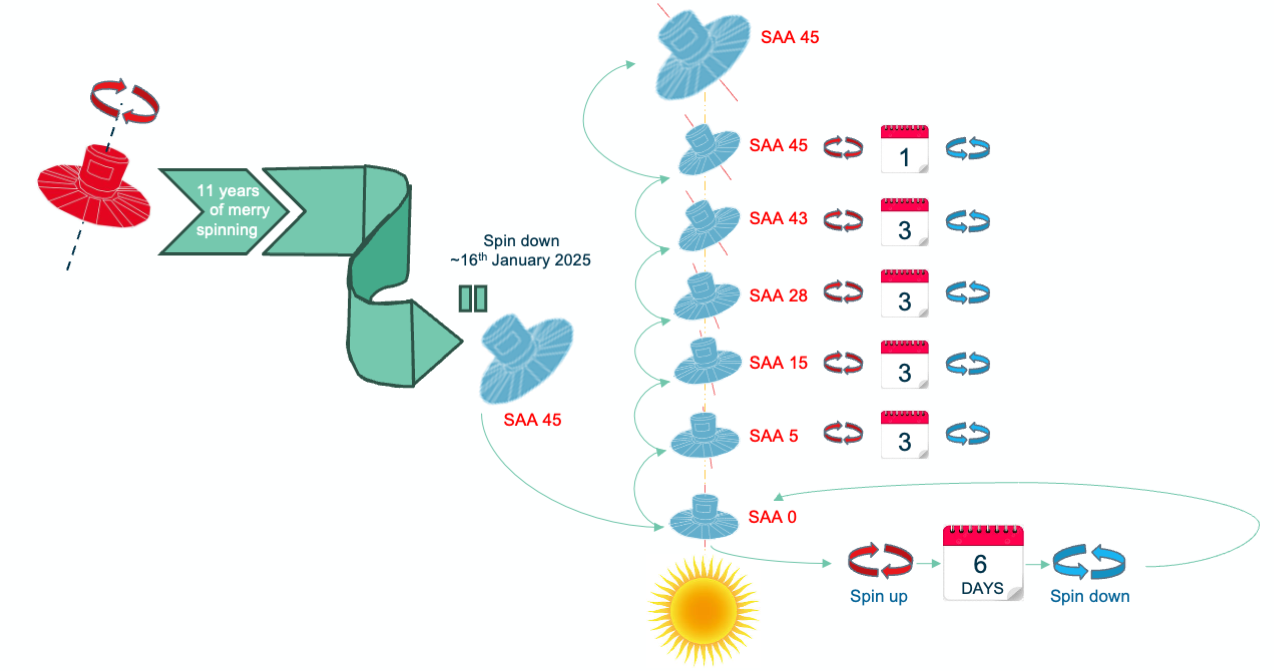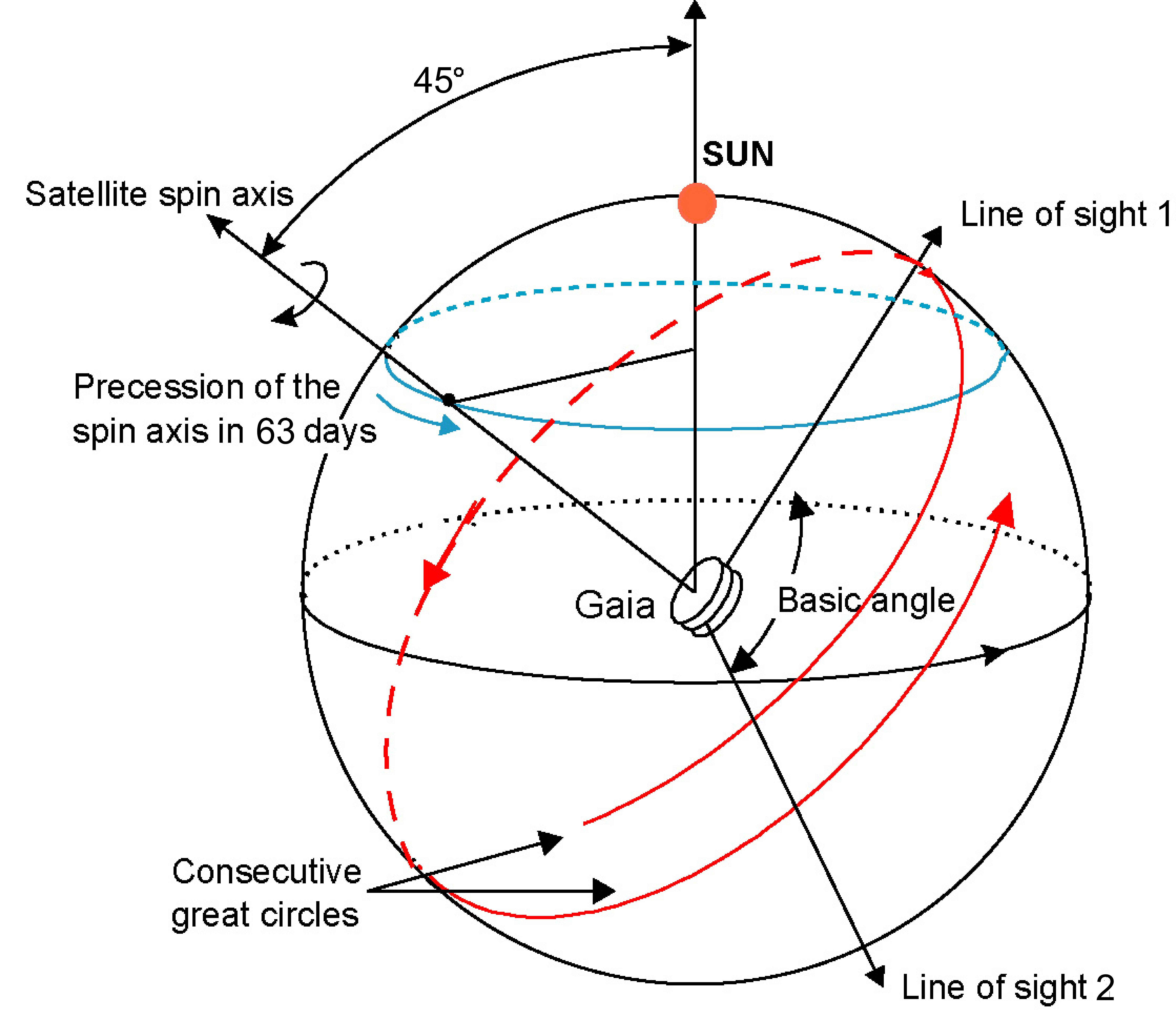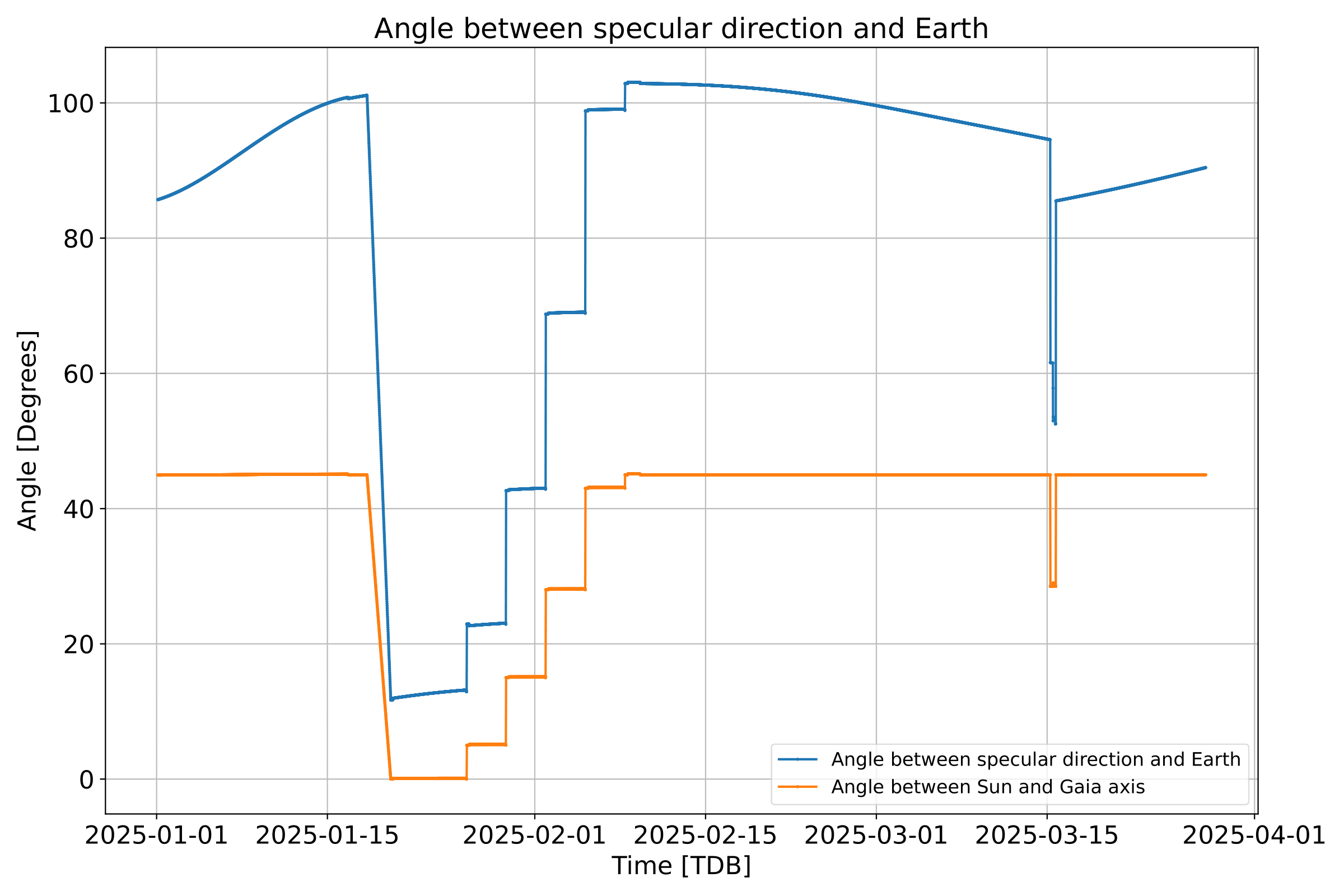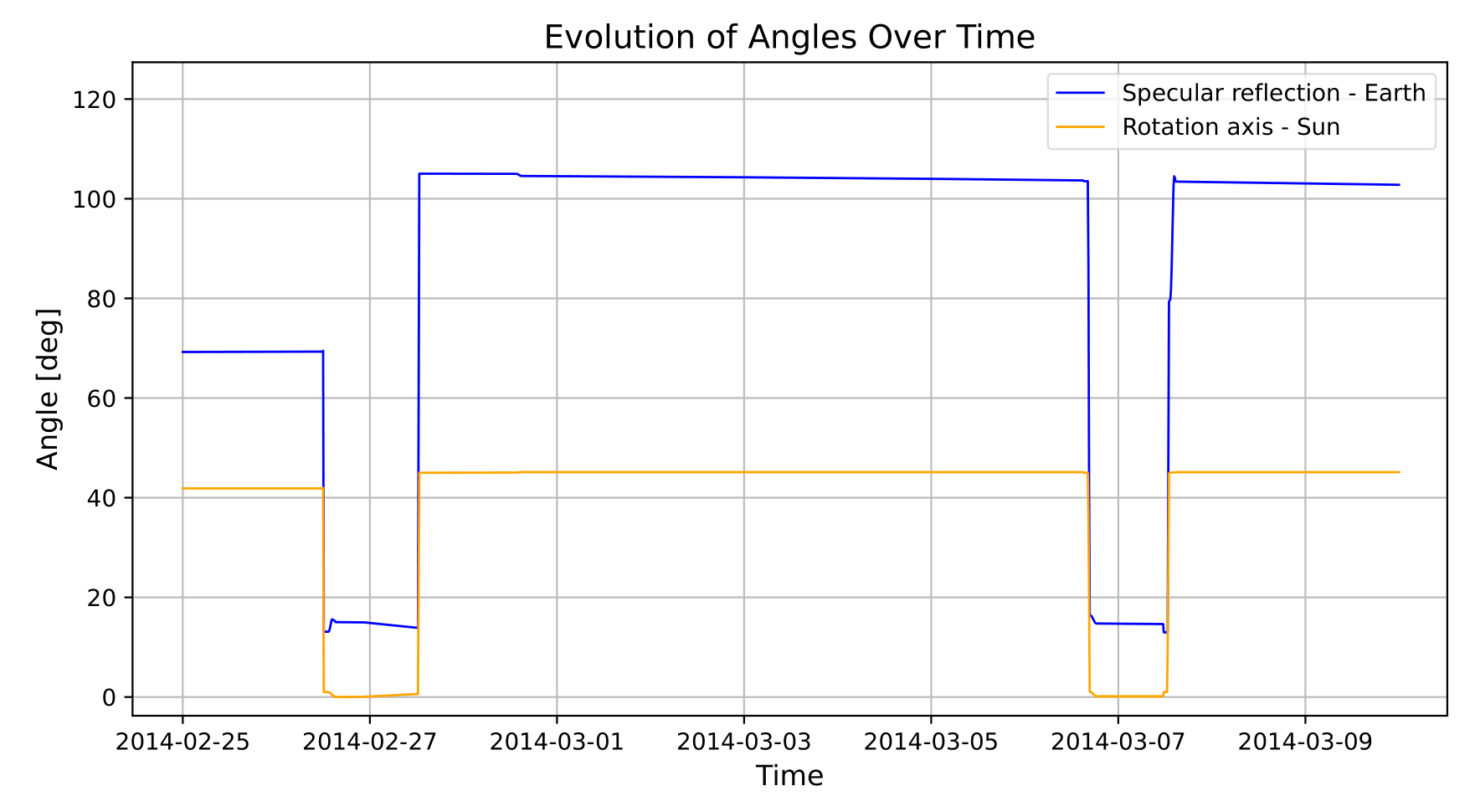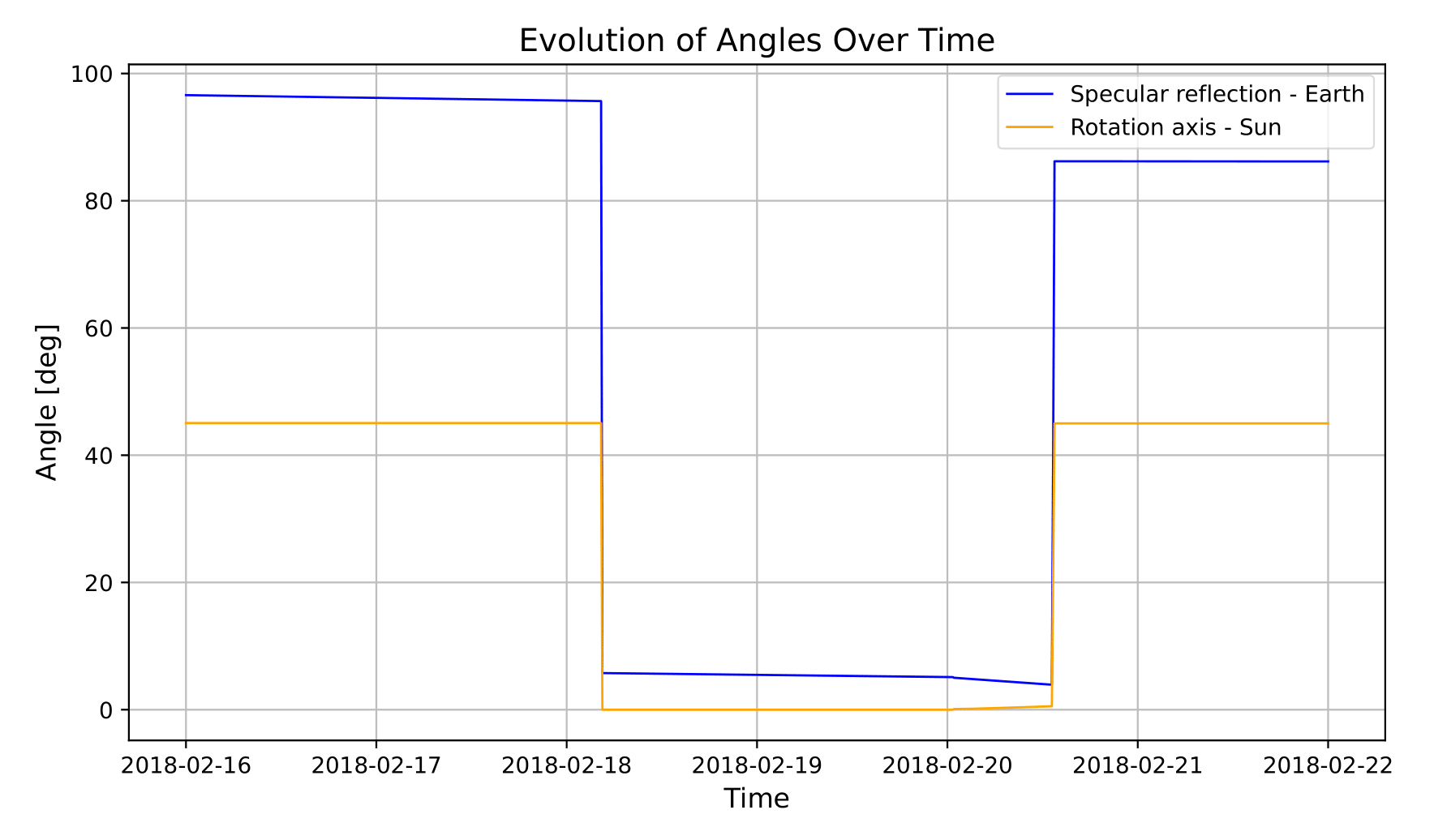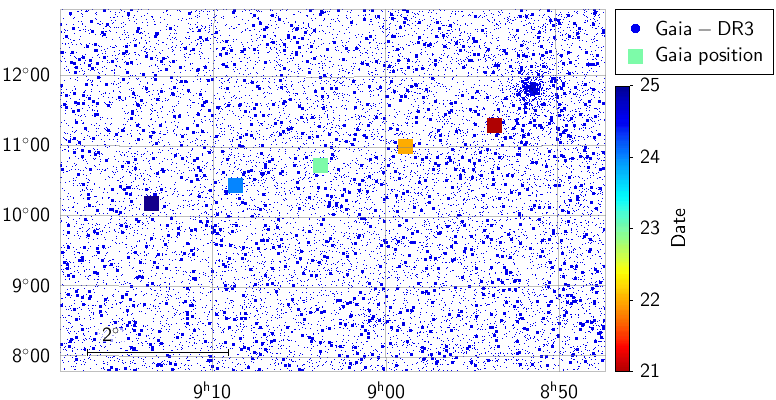Observe Gaia from the ground - Gaia
Observe Gaia from the ground
Gaia Ground Based Optical Tracking (GBOT)
Ever since Gaia was launched into space, the spacececraft has been observed from the ground. This task is known as the Ground Based Optical Tracking (GBOT) of Gaia, and was necessary to ensure the full accuracy of the ultra-precise Gaia astrometry could be reached, since the conventional means of determining a spacecraft's position and motion were not sufficient in the case of Gaia.
Soon after launch, it was discovered that Gaia was about 3 magnitudes fainter than predicted, and the GBOT team adapted their approach. Supplemented by another technique called Delta Differential One-Way Ranging (Delta DOR), previously only used for interplanetary missions, GBOT was nonetheless able to fulfil its task of observing Gaia from ground.
Most of the time Gaia was visible at about 21 magnitude in the red passband, but there were some occasions where Gaia was far brighter. During the initial testing and commissioning phase in the first half of 2014, Gaia was swerved so that the sun shield assembly directly faced the Sun (instead of the 45 degrees solar aspect angle it keeps during its nominal operations). Other rare occasions were when Gaia avoided the Draconid storm with a commanded safe-attitude manoeuvre, this changed Gaia's attitude with respect to the Sun and a brightness of about 14 to 15 magnitude in the same passband was observed by GBOT. It is assumed that this brightness will be reached during the end of observation testing, when Gaia is repositioned to similar angles with respect to the Sun.
Read more about this topic in the article on observing Gaia from Earth to improve its star maps.
Gaia Ground-Based Optical Tracking measurements showing apparent magnitude of Gaia as a function of time, with a clear peak at the start in 2014 when Gaia was in its commissioning period, and another clear peak around 2018 when Gaia was oriented differently with respect to the Sun with a commanded safe-attitude manoeuvre to avoid the Draconid storm. Credits: ESA/Gaia/DPAC - CC BY-SA 3.0 IGO. Acknowledgements: Gaia GBOT team.
Perform Gaia observations yourself
While Gaia has been visible from ground for dedicated ground-based observatories, it was very faint and difficult to follow-up for amateur astronomers (at a magnitude of about 21). During the Gaia technology tests following the end of Gaia observations, Gaia's solar aspect angle will change and its brightness will change accordingly (to a magnitude of about 15). This will give the unique opportunity to view Gaia with also smaller telescopes from ground.
The visibility will change because the solar aspect angle (SAA) of Gaia will change. Below an overview is given of the planned solar aspect angle changes over time. This schedule can still change and more detailed information on how to observe Gaia from ground in this period will be given soon.
| Start (UTC) | End (UTC) | Solar Aspect Angle (SAA) (*) | Brightness (**) | Operations (***) |
|---|---|---|---|---|
| 13 January 2025 T22:26 | - | - | - | Full moon (OBMT 16380.37) |
| Gaia science observation phase | 15 January 2025 08:15 | 45 degrees (NSL) | Faint at approx. 21 | Nominal scanning law (NSL) |
| 15 January 2025 08:15 | ~15 January 2015 22:30 | 45 degrees (NSL | Faint at approx. 21 | Nominal scanning law (NSL) |
| ~15 January 2025 22:30 | 20 January 2025 12:36 | 45 degrees (Sun steering) |
Faint at approx. 21 |
Spin down and IGM entry, station keeping manoeuvre on the 16 January |
| 20 January 2025 12:36 | 22 January 2025 11:23 | 45 degrees to 0 degrees | Becoming brighter | Slewing at ~1 degree per hour from SSA 45 to 0 |
| 22 January 2025 11:23 | 10 February 2025 08:45 | 0 degrees (Sun steering) | Bright at approx. 15 | Sun Steering |
| 10 February 2025 09:16 | 16 February 2025 09:12 | 0 degrees (EPSL) | Bright at approx. 15 | Start = Spin up, End = spin down |
| 12 February 2025 T08:02 | - | - | - | Full moon (OBMT 16497.97) |
| 16 February 2025 15:07 | 19 February 2025 15:05 | 5 degrees (EPSL) | Bright at approx. 15 | Start = Spin up, End = spin down |
| 19 February 2025 21:10 | 22 February 2025 21:08 | 15 degrees (EPSL) | Medium bright between approx. 15 and 21 | Start = Spin up, End = spin down |
| 23 February 2025 03:13 | 26 February 2025 03:11 | 28 degrees (EPSL) |
Medium bright between approx. 15 and 21 |
Start = Spin up, End = spin down |
| 26 February 2025 09:16 | 01 March 2025 09:14 | 43 degrees (EPSL) | Faint at approx. 21 | Start = Spin up, End = spin down |
| 01 March 2025 15:19 | 02 March 2025 15:15 | 45 degrees (EPSL) | Faint at approx. 21 | Start = Spin up, End = spin down |
| 02 March 2025 16:30 | 04 March 2025 15:27 | 45 degrees to 0 degrees | Becoming brighter | Slewing at ~1 degree per hour from SSA 45 to 0 |
| 04 March 2025 15:27 | 04 March 2025 16:30 | 0 degrees | Bright at approx. 15 | |
| 04 March 2025 16:30 | 04 March 2025 16:38 | 0 degrees to 45 degrees | Becoming fainter | Slewing at nominal rate from SSA 0 to 45 |
| 4 March 2025 | 26 March 2025 | - | - | Additional tests |
| 27 March 2025 | 27 March 2025 | - | - | Gaia passivation |
Table with draft schedule for Gaia's changing solar aspect angle following the planned technology tests. (*) The Gaia solar aspect angle (SAA) is the angle between the spacecraft spin axis and the Sun. (**) The brightness refers to the brightness of Gaia in apparent magnitudes (visible light). (***) NSL refers to the nominal scanning law, EPSL refers to the Ecliptic Plane scanning law. Last updated 7 February 2025.
Gaia's expected attitude profile following the end of Gaia science observations on 15 January 2025. For the planned timing, the table above is leading. This visual is merely an illustration. Credits: ESA/Gaia/DPAC - CC BY-SA 3.0 IGO. Acknowledgements: Gaia Flight Operations Team.
Gaia scanning law explained, as published here. You can see clearly the Gaia solar aspect angle of 45 degrees highlighted. Credits: ESA/Gaia/DPAC - CC BY-SA 3.0 IGO.
Preparing for the SAA-variation test - potential brightness of Gaia
Before making any estimate of the expected brightness during the SAA swerving test, an important issue needs to be addressed, concerning the three different aspect angles involved. The Solar Aspect Angle (SAA) is the angle between the rotational axis of Gaia and the line "Sun - Gaia" and has been mentioned above already.
Another, equally important angle is the Earth Aspect Angle (EAA), which is the angle between Gaia’s rotational axis and the vector "Earth - Gaia". Would Gaia permanently stay at the L2 position, these two angles would, in the ideal situation, be exactly the same, as the object triple "Sun - Earth - Gaia" would be on the same line. However, Gaia is on a Lissajous orbit oscillating around the L2 point, bringing it up to 15 degrees from the L2 position in the sky. As the exact location of the L2 point is in the permanent Earth shadow, Gaia is never found there, but always at some angle above or below the L2 point and/or preceding or following the L2 point (taking the ecliptic as the plane of reference).
For an EAA of 0 the reflective surface of the Gaia Deployed Shield Assembly would exactly face Earth. This might have as a consequence that Gaia is not necessarily at its brightest at SAA=0 degrees, but at some other value, such as SAA=5 degrees, or in extreme cases, even at SAA=15 degrees. It may even be the case that the potentially brightest configuration (i.e. the specular reflection beam pointing directly towards Earth) is not met at all during the test.
A third angle, called the Reflection Aspect Angle (RAA), is related to the previous two, and is defined as the angle between the line "Earth – Gaia" and the specular reflection vector of the Sunlight falling on the Gaia surface, i.e. the normal to the visible side of Gaia’s Deployed Shield Assembly. From a strictly geometric point of view, if this vector points directly towards Earth, Gaia will be at its brightest. However, given the 11-year degradation of the surfaces of the spacecraft due to the harsh environment in space, it is unclear how reflective the once pristine Kapton layered surface still is.
Angle between the specular direction and the Earth, as computed for the period following the Gaia end of observations, when technology tests are taking place. Image credits: ESA/Gaia/DPAC - CC BY-SA 3.0 IGO. Acknowledgements: Gaia GBOT team.
The RAA has been calculated for the times of the SAA variation test. The results are shown in the figure above. Unfortunately the geometric situation is less than optimal, so minimum value of the RAA will be about 13 degrees at the start when Gaia is at SAA=0 degrees, and at about 22 degrees when Gaia is at SAA=5 degrees. Therefore, the maximum brightness of Gaia may be fainter than the expected 14-15 magnitude.
In order to assess the possible range of the expected brightness, the RAA has also been calculated for the previous SAA=0 degrees observations in 2014 and 2018. While the 2018 data was taken under a much smaller RAA (i.e. the specular reflection beam being much closer to Earth than foreseen for the EOO phase in early 2025), both 2014 instances were at similar, if not slightly larger (hence worse) RAA. This could give some estimation of what to expect.
Evolution of the angle between the specular direction and the Earth over time, as shown for a period in 2014 (on the left) and a period in 2018 (on the right). Image credits: ESA/Gaia/DPAC - CC BY-SA 3.0 IGO. Acknowledgements: Gaia GBOT team.
Please note that this does not allow to make predictions in absolute terms, i.e. what magnitude Gaia will be. The main reason for this is the aforementioned condition of the reflective surface --- after all the last SAA=0 degrees data was obtained in 2018!
When best to observe?
The different SAA-values are listed in the table. Depending on your equipment, the lower SAA levels are going to be the brighter ones. As the step-phase of the test starts at SAA=0 degrees and works its way up to 45 degrees, you will get an estimate from your data, whether it is still feasible to continue observing at the next SAA level.
Note that prior to the step phase, there is a 48 hour constant slew phase, during which Gaia is slewed from the nominal SAA=45 degrees to the SAA of 0 degrees. Especially for those with large aperture equipment, it may well be worthwhile to observe this phase too (while you may not be lucky at the beginning of this slew phase, at some time, detections most likely would kick in). This can give access to intermediate values (the SAA changes during the step phase slews, are to short to be of any use). Potentially, this phase could provide the most information, since this is a slow but continuous slew, covering all SAA between 45 and 0 degrees, while the later step phase only allows observations at those fixed values as specified. Therefore,
observers are strongly encouraged to observe during this timespan of 48 hours too.
Interesting combination!
During this period, Gaia will pass close to M67. It will pass by when it is faint, much fainter than the many stars of M67. However, if someone has a wide enough field of view, one may spot Gaia when it is temporarily brighter (but still fainter than M67) and about 2 degrees or more from the cluster, then one could potentially see Gaia as a string of points if one makes a multiple exposure.
This plot shows Gaia's position (with the squares, colour coded according to the date) against the sky (as obtained from the Gaia Data Release 3 catalogue). M67 is the clustering of stars in the top right corner.
Gaia spacecraft position against a backdrop of stars. M67 is the concentration of blue points in the upper right part of the map. The Gaia spacecraft position is shown with squares, with a colour-code linked to the date. The date is linked to the expected brightnes of Gaia from the table given on this page as well. Credits: ESA/Gaia/DPAC - CC BY-SA 3.0 IGO. Acknowledgement: M. Altmann and the GBOT team.
Filters, passbands, etc.
The operational GBOT observations were carried out in a red passband, as this was the best compromise between the signal to noise ratio (object brightness and sky background) and the differential colour refraction. During the commissioning phase in 2014, i/I passbands were also tested, but the achievable signal to noise was inferior, so that red light was chosen.
That said, for this EOO compaign, observations in all passbands are welcome. In fact, during the early phase of Gaia, some observations were performed with the GROND camera, which is a simultaneous Optical/NIR photometer, mounted onto the 2.2 m MPIA telescope at La Silla observatory. These data have the SDSS g'r'i'z'+ NIR JHK passbands (see image). While it would be very useful to have observations in bluer passbands, maybe even bluer than g' (which is similar to the Johnson B in central wavelength), the magnitude drop-off from r' to g' is approximately 2 magnitude, at least in the pristine Gaia of 2014 --- this may of course have changed since then. Therefore, the majority of observations are expected to be in the spectral region encompassing the R/r', i' and possibly z' bands. White-light (i.e. without any filter inserted) observations are also welcome. Please specify what filter has been used, when you upload data.
Gaia ephemerides
To follow-up from the ground, a good knowledge of where to find Gaia in the sky is essential. A tool called the Gaia ephemeris service is available to make predictions. It can derive topocentric ephemerides for every city worldwide above 100,000 inhabitants. The server is updated on a weekly basis.
Track where Gaia is in the sky with the Gaia ephemeris service
Warning: on 21 January between 09:00 and 12:00 CET maintenance was planned to the ephemeris server. During this period, the server is unavailable
1. The predicted magnitudes given in the ephemeris files are those of the nominal settings, i.e. with SAA=45 degrees. Therefore they will be around 21 mag, even when SAA=0 degrees.
It is not possible or even worthwhile to adapt the magnitudes to reflect the SAA changes during the test. First, it would mean a lot of effort, and second the timetable of the different phases may change on short notice. Therefore the magnitudes given in the ephemerides should best be ignored.
2. Shortly after the final science data have been obtained, a large station keeping manoeuvre (SKM) is scheduled. This means the trajectory of the spacecraft is altered, and with a total change of the velocity of 2.7 m/s, this translates to about 32"/day (assuming all of the change is in transversal direction). However, the most recent set of ephemerides have already taken this into account, so the ephemeris taken from the public server should be reasonably accurate.
3. Please be aware that when using the ephemeris page over several days, it is important to reload each day to make sure the ephemeris is computed for the right day.
Documentation
In preparation of this campaign, a document was written by M. Altmann et al. called "GBOT activities during the Gaia End-of-Observations testing (public version)" which is available for download and contains some additional material.
Share your Gaia observations
We would love to see your observations of the Gaia spacecraft.
If you want to share your observations with the astronomical community, and/or if you want to help the GBOT-team with their brightness campaign, we welcome your data. Below we describe where to deposit them, dependent on the type of data you share. Please be aware that we can only accept fully reduced data, as we do not have the manpower to reduce the data ourselves.
In order to be a flexible as possible, there are three repositories:
- All image (and short video clip) files, i.e. jpeg, png, tiff, mpeg, gif, ..., can be sent directly to gaia-helpdesk@esa.int. A selection of these files will be shown on Gaia Cosmos. When sharing your files, please mention a credit line to go with the image, and if possible, the date, time and location of observation. Please do read point 3 in case you wish to send very large files.
- All FITS data can be put on this VO-type repository. Note that this portal ONLY accepts FITS files. Please adhere to the instructions given on the entry page. Please be reminded to only submit fully reduced data.
- All other files, i.e. ASCII, CSV, VO-table, etc. can be put on a cloud, based at the University of Heidelberg, Germany. This service will not be open access, but will be granted upon request, to prevent misuse. Requests for access to this cloud can be directed to M. Altmann. Image/video files, which are too large to be accepted by the gaia-helpdesk email account can also be put there, with the same mode of access applying.
Definitions
- SAA: Solar Aspect Angle, i.e. the angle between the Gaia spin axis and the line "Sun-Gaia". During the operational phase, the nominal SAA value was 45 degrees, i.e. with the specular reflection beam pointing 90 degrees away from the Sun. An SAA of 0 means that the plane defined by Gaia's solar shield is orthogonal to the Sun, thus acting as a mirror, reflecting the incoming light back towards its origin.
- EAA: Earth Aspect Angle, i.e. the angle between Gaia's spin axis and Earth. As Gaia oscillates around the L2, this is different to the SAA, by the angular separation of Gaia from the L2 point
- RAA: Reflective Aspect Angle, i.e. the angle between the line "Earth - Gaia" and the direction of the specular reflection.
- Slew phase: The phase, lasting about 48 hours, during which Gaia is moved to an aspect angle of 0 degrees
- Step phase: The part of the test, where Gaia starts at a SAA of 0 degrees, and is then subsequently moved to the other SAA, as specified in the table.
- Station Keeping Manoeuvre (SKM): on-board change of trajectory action to keep the spacecraft in the correct position with respect to the "Sun-Earth" L2 and to prevent it from moving into the Earth's shadow.
- Removed a total of (11) style text-align:center;
- Removed a total of (8) style text-align:justify;
- Removed a total of (1) align=center.
- Removed a total of (1) border attribute.
- Removed a total of (1) cellpadding attribute.
- Removed a total of (1) cellspacing attribute.








































 Sign in
Sign in
 Science & Technology
Science & Technology

